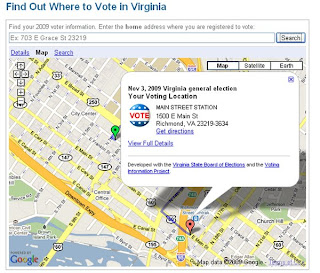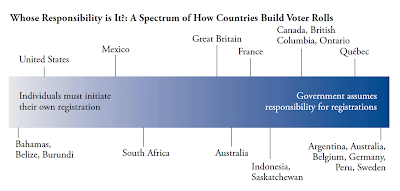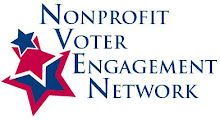
On Wednesday afternoon, Nonprofit Voter Engagement Network partner
MassVOTE kicked off its 2010 Census activities with an event co-sponsored by the Boston Foundation amongst others.
The event, attended by more than 60 representatives from Nonprofits around Massachusetts, featured (from right to left in the photo)
Avi Green, executive director of
MassVOTE, Kathy Ludgate, director of the
Boston Regional Census Office,
Michael Weekes, President and CEO of the
Providers' Council, Paulo Pinto, executive director of the
Massachusetts Alliance of Portuguese Speakers and
Kelly Bates, executive director of the
Access Strategies Fund. The speakers offered a broad perspective on the challenges and opportunities for 501(c)(3) nonprofits in the 2010 Census.
Director Ludgate provided an overview of activities in the coming months and extended the help of her office and staff of nearly 100 partnership specialists and assistants to the attending
Weekes, a member of NVEN's steering committee, spoke about the
high stakes for Massachusetts in next year's Census. Based on data obtained in the 2000 Census, Massachusetts received more than 9.6 billion dollars in federal funds in 2007, of which more than half went Health and Human Services. Looked at another way, each person counted in the 2000 Census earned Massachusetts $1,493.61 in federal funds in 2007. Those individuals and dollars add up fast.
Pinto spoke about the
importance of the Census to ethnic and immigrant communities and some of the simple tactics nonprofits can use to reach out to their clients and constituents. While Mr. Pinto's organization has formed a Complete Count Committee to help ensure an accurate count of the Portuguese and Brazilian community, he stressed the importance of a range of tactics from putting up a poster in your organization's lobby, providing flyers at events or including Census messaging in your communications to becoming Questionnaire Assistance Center or Be Counted site. Every nonprofit has a role to play in the 2010 Census.
Bates, of Access Strategies, not ready to concede the fight for the congressional seat Massachusetts is predicted to lose during the next apportionment, discussed the importance of a complete and accurate count of Mass residents. Bates also discussed a new initiative by Access Strategies, the Boston Foundation and a growing list of local foundations to create a Census Equity Fund to provide $500,000 to Massachusetts nonprofits for work on the 2010 Census. Bates expects that on-the-ground work by grantee organizations will be in full swing between January and June 2010. The groups will be sponsoring public education events; distributing and displaying census information onsite, in their community, and in organizational

materials; phonebanking and going door-to-door to help people complete and return their census forms; and promoting the census in ethnic media and markets.
All attendees received a copy of
NVEN's Census Toolkit for Nonprofit Organizations, which provides nonprofits with all the information they need to get started involving their communities in the 2010 Census. To order your copy, visit
www.nonprofitscount.org/toolkit-ordersCongratulations to MassVOTE on a very successful Census 2010 outreach campaign kickoff!



















